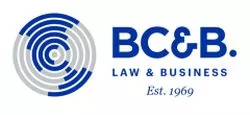Recently, the Mexican Examiners have faced several controversial issues regarding how to determine the patentability of "new" technologies. In particular, they are considering the best strategies to evaluate the patentability criteria for computer implemented inventions which, in most of the cases, are related to the automation of well known methods.
In this sense, the most common rejections issued by the Mexican Institute of the Industrial Property (MIIP) to such type of inventions, make reference firstly, to a lack of technical problem disclosed into the specification of the invention, when the pursued matter falls into the prohibitions of Article 19 of the Industrial Property Law (IPL), and secondly, to a lack of inventive step.
It is important to mention that besides the condition when the patent application lacks of an appropriate indication to establish which the technical problem is, or when determining if the invention falls into the matter which is not considered as an invention according to the established on Article 19 of said Law, it is essential to clearly understand if the automation of a known method involves the lack of inventive step or not.
For instance, the automation of a method is nowadays considered as a computer implemented method. Thus, we would have to highlight the following fact: when a method is already known, and such method was previously carried out by different means - generally electromechanical means - that differ greatly from computer means, there could be some controversial points regarding the obviousness of the invention.
Examiners tend to reject the inventive step of computer implemented inventions since they erroneously assert that due to the fact that the method is carried out by a computer system, the elements and features involved in such system are well known in the state of the art and thus, the computer implementation lacks of inventive step.
However it is precisely here where the questions arise:
- Does the automation of a known method really involve an inventive step?
- Would it have been obvious for a person skilled in the art to merely carry out the implementation in a computer of a well known method?
Specifically in our country, Examiners do not focus into the target of the implementation. That is to say, they do not stop at any time to think about the actual reason why such automation was developed to carry out a method. In contrast, the fundamental part of their analysis focuses in determining the "technical elements" involved to fully implement the method, which accordingly, correspond to the different elements of the computer system.
It is key to understand that to determine the inventiveness of an invention, all the elements and features involved in the same must be considered since the knowledge of different technical fields intervenes in a computer implemented invention, such as the own computational knowledge and that of the specific field for which the method was developed.
Therefrom, it is possible to establish, and eventually argue, that a computer implemented invention shall not only be analyzed in function of the computer system which executes the different steps to carry out a method as the essential feature of the same. Besides such computer system, there is a complete configuration of different elements directly involved in the computer implemented methods which should be considered in order to accurately determine the inventive step.
In this sense, we believe that although such computer implemented inventions are based upon a well known method, they should not be considered as obvious in a first instance before considering why such method was automated and before taking in account all the elements and features of the same involved into the development of the computer implemented invention.
It is imperative to bear in mind the current elements and features used to develop the new automated method, which are different from the ones used when the method was carried out manually. In other words, besides considering the steps involved in said method it is necessary to consider the way that the computer carries out each one of its steps to achieve the goal for which it was designed and developed.
Likewise, there are also different elements involved which should be considered such as inputs and/or outputs admitted by the user, which allow the good performance of the method. Although the method is well known, the combination of the specific knowledge offered by the computer field with the technical field that owns the method is what sustains the non-obviousness for such kind of inventions.
The content of this article is intended to provide a general guide to the subject matter. Specialist advice should be sought about your specific circumstances.


